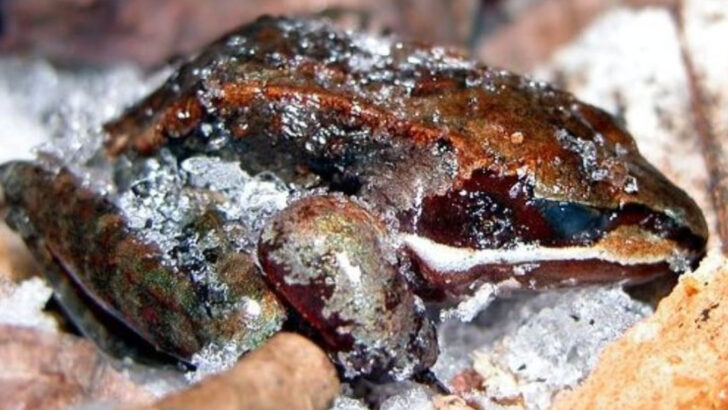The Alaskan Wood Frog is a marvel of nature. This amphibian possesses the extraordinary ability to survive freezing temperatures that would be fatal to most creatures.
Found in the cold climates of Alaska, its unique adaptations have fascinated scientists and nature enthusiasts alike.
From its amazing freeze tolerance to its vital role in the ecosystem, the Alaskan Wood Frog is full of surprises.
Discover ten incredible facts about this resilient amphibian and learn how it thrives in one of the harshest environments on Earth.
Freeze Tolerance
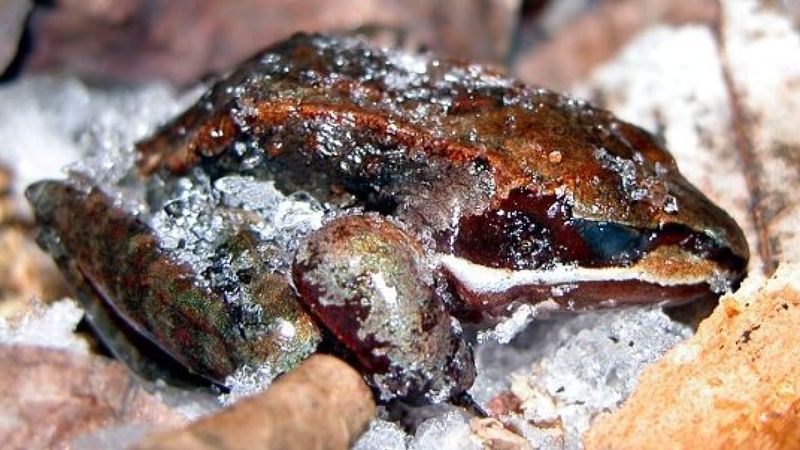
Imagine being frozen solid yet still alive. The Alaskan Wood Frog can endure being frozen for months, surviving without heartbeat, breathing, or brain activity.
This incredible adaptation allows them to thrive in the cold Alaskan winters. Their bodies produce a special type of antifreeze that prevents ice from forming within their cells, allowing them to revive when temperatures rise.
This remarkable trait not only ensures their survival but also baffled scientists who study these frogs to understand extreme cold survival. The Wood Frog’s freeze tolerance is a testament to nature’s resilience and adaptability.
Antifreeze Glucose
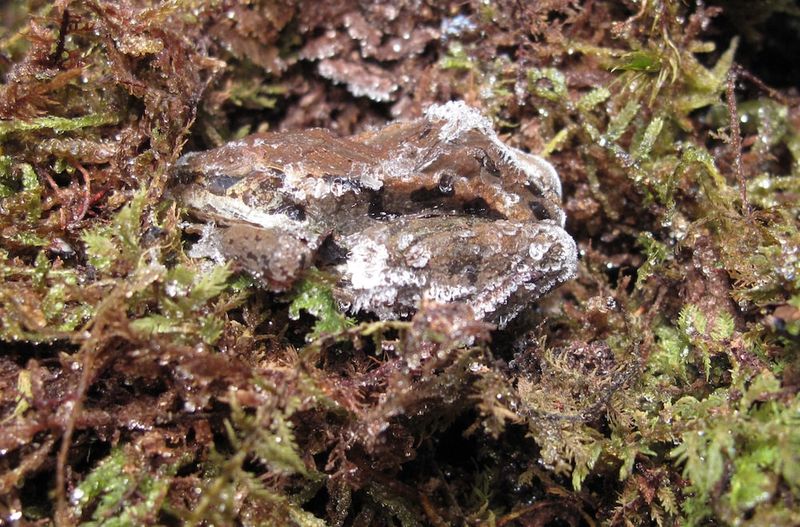
The Alaskan Wood Frog’s survival secret lies in its blood. As the temperature drops, the frog’s liver produces glucose that acts like antifreeze.
This natural antifreeze prevents the frog’s internal organs from freezing, allowing it to survive temperatures as low as -6°C. This high concentration of glucose is a unique adaptation among amphibians and provides scientists with valuable insights into cryopreservation.
Understanding this process could pave the way for medical advancements in organ preservation for transplantation. The frog’s antifreeze glucose is a fascinating example of evolutionary innovation.
Hibernation Habits
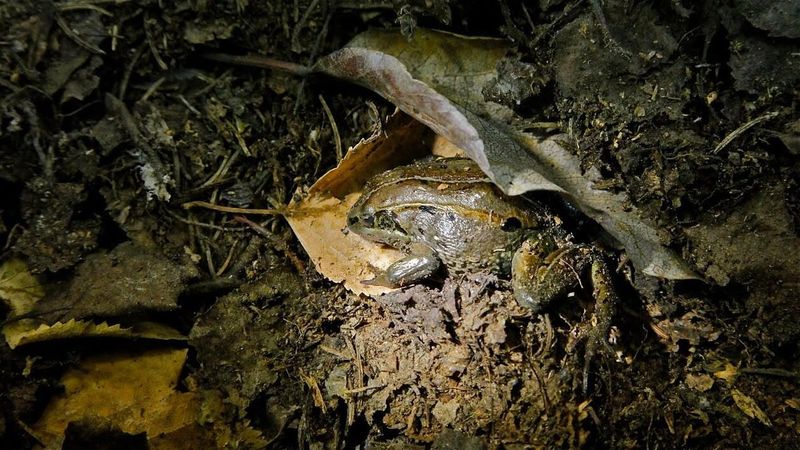
During the harsh Alaskan winter, the Wood Frog hibernates beneath the forest floor. Covered in leaf litter and snow, it remains in a state of suspended animation.
The frog’s heart stops and its metabolism slows to a near halt. This hibernation strategy allows it to survive extreme cold and conserve energy until spring arrives.
When the weather warms, the frog thaws and reanimates, ready to mate and continue its life cycle. The Wood Frog’s hibernation habits exemplify nature’s ingenuity and the delicate balance of life in challenging environments.
Breeding and Lifecycle
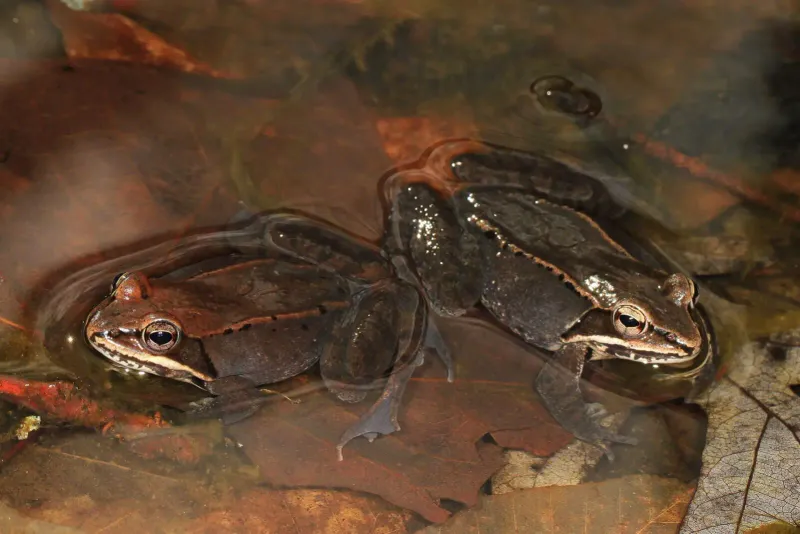
The breeding season of the Alaskan Wood Frog is a race against time. As soon as the snow melts and the ponds thaw, these frogs emerge to breed.
Males call to attract females, and once paired, the female lays hundreds of eggs in the water. These eggs hatch into tadpoles, which must quickly grow into frogs before the pond dries up. This rapid lifecycle ensures the survival of the next generation.
The urgency and efficiency of their breeding process highlight the adaptability and resilience required to thrive in Alaska’s short summers.
Camouflage Abilities

The Alaskan Wood Frog is a master of disguise. Its brown and green mottled skin allows it to blend seamlessly with the forest floor.
This camouflage is essential for avoiding predators, as well as for hunting insects and small invertebrates. The ability to hide in plain sight enhances its survival in the wild. Camouflage is not just about evasion but also about fitting into the ecosystem.
The Wood Frog’s skin pattern and coloration reflect the intricate artistry of evolution, providing it with essential protection and hunting prowess.
Unique Vocalizations

The calls of the Alaskan Wood Frog are a herald of spring. Emerging from hibernation, males begin their unique vocalizations to attract mates.
Their calls, resembling a series of rapid quacks, resonate through the forests and wetlands. This sound is crucial for mating success, as females are drawn to the most resonant calls. The vocalization is not only a mating ritual but also a signal of life returning to the thawing landscape.
The Wood Frog’s unique calls echo the cycle of renewal and the vibrant energy of spring in the Alaskan wilderness.
Role in Ecosystem
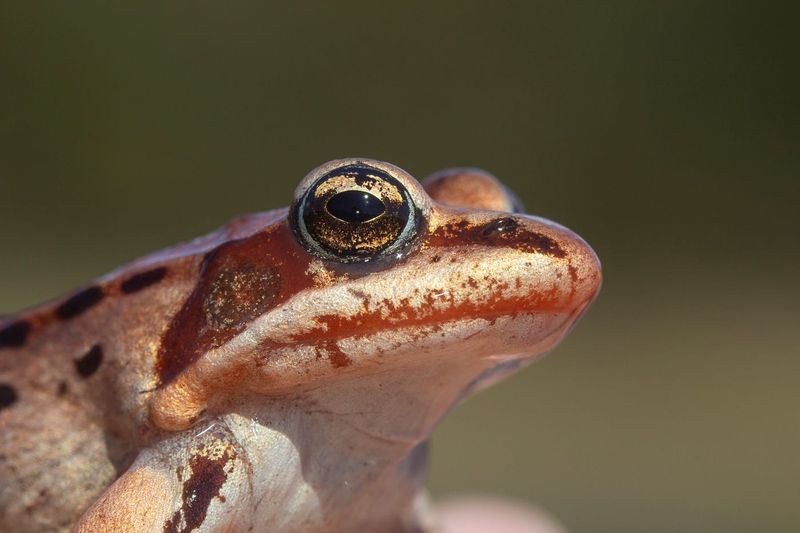
The Alaskan Wood Frog plays a vital role in its ecosystem. As both predator and prey, it maintains the balance of insect populations and serves as a food source for birds and mammals.
Its presence indicates a healthy environment, as frogs are sensitive to ecological changes. By controlling insect numbers, they help prevent overpopulation and the spread of diseases.
The Wood Frog’s role is a critical component of the Alaskan ecosystem’s health, reflecting the interconnectedness of life. Its survival signifies the resilience of nature in the face of adversity.
Resilience to Climate Change
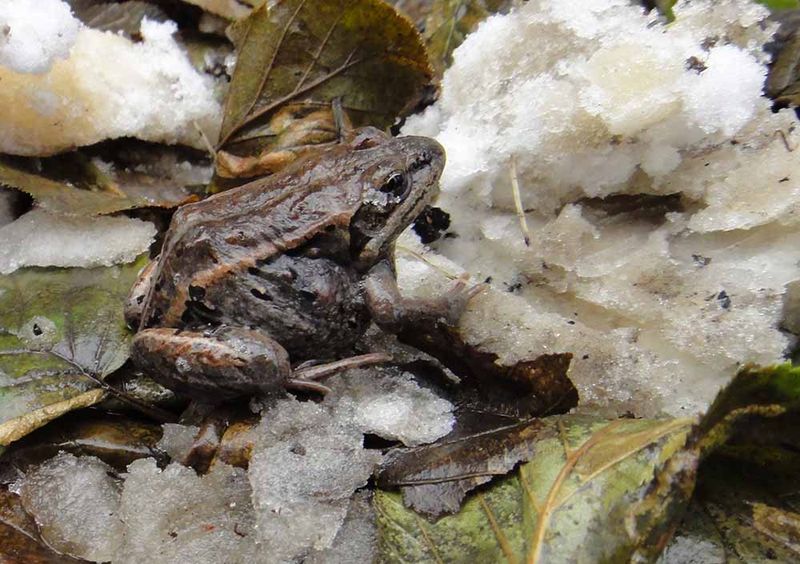
Adaptation is the key to survival, and the Alaskan Wood Frog exemplifies this with its resilience to climate change. Despite fluctuating temperatures and shifting seasons, these frogs continue to thrive.
Their ability to freeze and thaw with the environment allows them to survive unpredictable weather patterns. This adaptability makes them a valuable subject for studying climate change impacts on wildlife.
As researchers observe their responses to environmental changes, the Wood Frog offers insights into the resilience and adaptability required for survival in a rapidly changing world.
Historical Significance
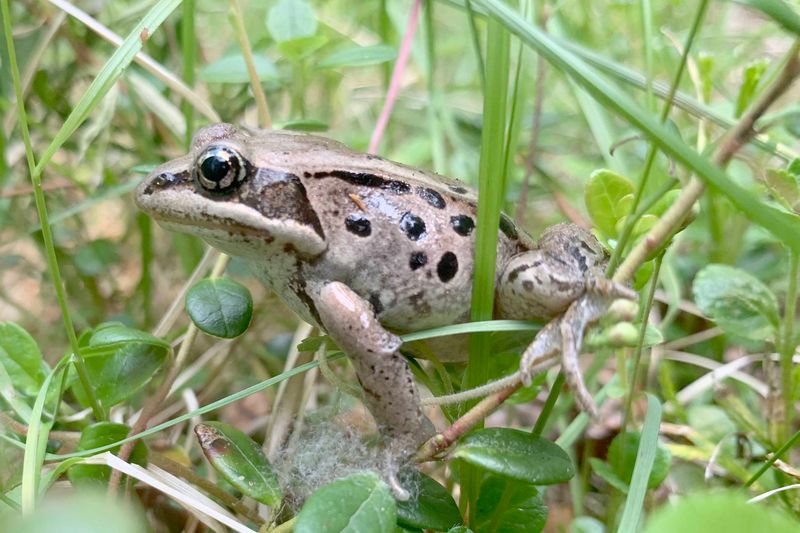
The Alaskan Wood Frog holds a place in the cultural history of indigenous Alaskan peoples. Its remarkable ability to survive freezing temperatures has inspired folklore and traditional stories.
The frog symbolizes resilience and adaptation, qualities revered by cultures that thrive in harsh environments. Its presence in indigenous art and storytelling highlights the connection between nature and human culture.
Exploring the frog’s historical significance offers a glimpse into the deep relationship between indigenous communities and the natural world. The Wood Frog is a symbol of life’s enduring spirit amidst the challenges of the Alaskan wilderness.
Scientific Research
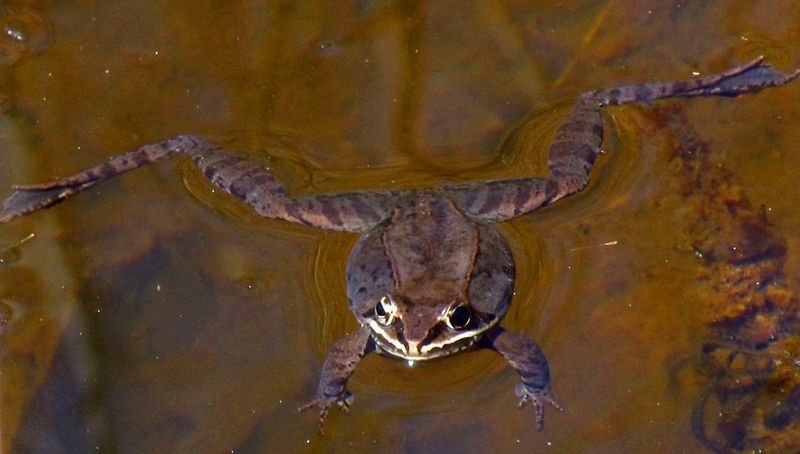
The Alaskan Wood Frog is a subject of scientific fascination. Researchers are intrigued by its freeze tolerance, studying it to unlock secrets of cryopreservation.
Understanding how these frogs survive freezing could revolutionize medical advancements, including organ preservation and hypothermia treatments. The frog’s adaptability provides a model for resilience and survival strategies in extreme conditions.
As scientists delve deeper into its biology, they uncover the mysteries of life at the edge of possibility. The Wood Frog’s contributions to science are invaluable, offering hope and innovation through its extraordinary natural abilities.

